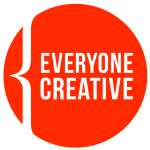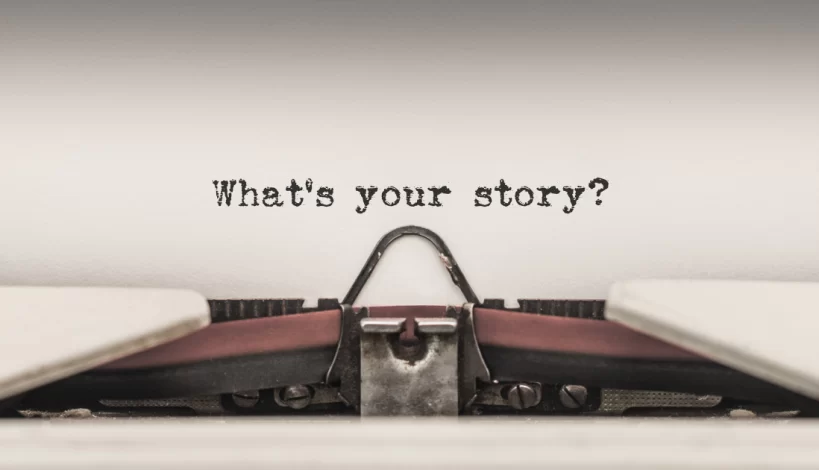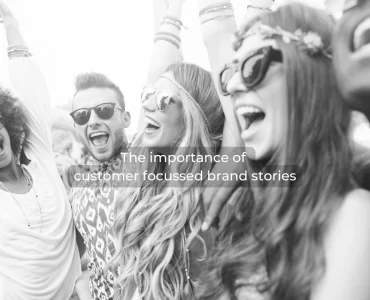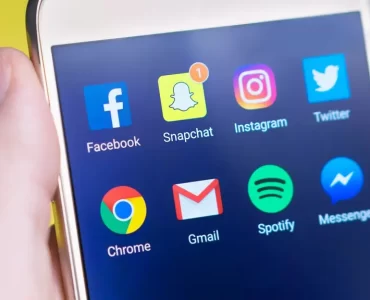Brand storytelling – The essential guide to tell yours powerfully
Think about Brand Storytelling like this. What makes some people so magnetic? Quite often, it’s not their looks. It’s their backstory – their experiences, their culture, their passions and purpose. And of course, their ability to win over people with the right stories at the right time.
It’s the same with brands. Today brands aren’t just entities, they’re practically people. More people now tune into and connect with brands through social media. It stands to reason then, that brands too must tell more interesting stories, to attract their own fanbase. That they must first spark interest in the minds of their audience, before brand loyalty and engagement can even be considered.
The power of stories
Stories are more than just tales. The modern historian Yuval Noah Harari in his books ‘Sapiens’ and ’21 Lessons for the 21st Century’, says that stories are the force that has bound humanity together into nations, religions, societies and even incited us to progress. Consider this quote by him:
“Homo sapiens is a storytelling animal that thinks in stories rather than in numbers or graphs, and believes that the universe itself works like a story, replete with heroes and villains, conflicts and resolutions, climaxes and happy endings.”
– Yuval Noah Harari
Similarly, brand stories are our modern myths. Consider the near-cult like following of a brand like Apple. A story founded on innovation and superiority in the time of Steve Jobs has persisted even today, with the constant positioning of their products as an innovative step ahead rather than just functional computers or mobile phones.
Not to mention, how its consumers are its most vocal brand advocates in carrying the brand story forward, and preaching it to whoever would lend them an ear.
Science further proves the power of storytelling too. Studies have shown that chemicals like cortisol, dopamine, and oxytocin are released in the brain when we’re told a story. TLDR; those are the chemicals that are associated with creating memories, aiding empathy and happiness. All of which are sensations that marketers chase down on the daily.
And if you’re one for a statistical POV, this should really bring home the gravity of storytelling. Cognitive psychology suggests that stories are 22 times more likely to be remembered than facts alone. Stories make us care, and remember the subject matter. This matters, especially now in this era of data.
Why data is more effective with storytelling
Yes, data is the most precious commodity on the planet for brands today. But raw data can be difficult to digest – have you ever had to sit through a presentation loaded with statistics, numbers and charts? Without the proper synthesis and storytelling, useful data can be unintelligible or even worse, ignored.
But with the right storytelling, data can become even more potent. Compellingly providing a narrative, proving a point, and able to spur action from its intended audience. AI may be the future of tech and communications, but it’s the powerful combination of data scientists and data storytellers that is poised to drive industry forward with intelligent decision-making.
Simply put, 3 key components of data storytelling are context, presentation and intention.
Context here, is defined as the circumstances that form the setting for the data, in terms of which it can be fully understood. This means painting a clear picture of the situation with regards to the population mix, geography or even the socio-economic conditions of the data set.
Presentation refers to effectively visualising the data gathered. Whether graphically, or as a concise number – data that is effectively presented and able to be understood without strain, can help maintain audience interest as they move on to the next step, intention.
Intention, is the desired effect you would want your data to incite from its audience. Clever copywriting and summation of the data, can help brands push a narrative and a brand call to action. Effectively, leaving your audience thinking about a key insight, or acting towards a conversion.
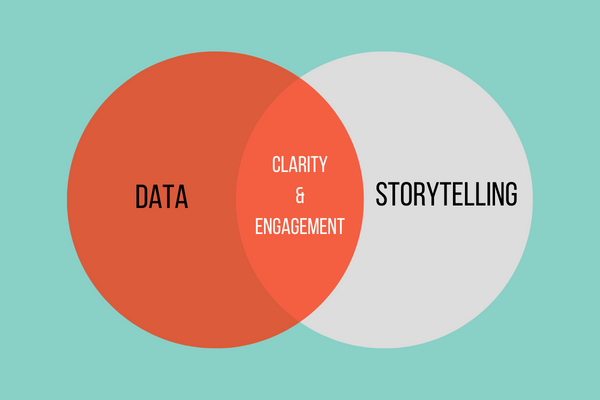
Great examples of data & storytelling
Spotify Wrapped
The Spotify Wrapped campaign is a popular example of data storytelling, with its users looking to review their year in listening. In 2020, Spotify saw an engagement of more than 90 million people with Spotify Wrapped.
Google Year in Search
In a similar vein, the Google Year in Search Video & Marketing Report have also become cultural phenomena for online users and for strategists respectively. Capturing the events, popular search terms and insights on digital behaviours of its users, and their sentiments in changing times.
Meta
Meta in a bid to prove it’s outlook as a responsible company publishes a yearly sustainability report that charts the companies attitudes and actions. Compellingly told and well-presented, last year’s report uses data effectively to brand Meta in a verdant and favourable light.
How to tell a convincing brand story – Models & Frameworks
So you’ve seen the necessity of storytelling, but let’s cut to the chase. How could you begin creating more effective stories for your brand? Writing effective brand stories in film and digital media has been a mainstay of professional copywriters, it’s possible that could begin by following a few simple rules and frameworks. Let’s start learning!
1. The Pixar Framework
In his book, To Sell Is Human, author Daniel Pink illustrates the Pixar Story framework that’s brought us so many loveable and timeless tales such as Soul, Finding Nemo and Inside Out. Here’s the format – you use it by completing each of the phrases to tell your story. Be sure to be concise and capture each of the starters in just a sentence or two.
- Once upon a time…
- Every day…
- One day…
- Because of that…
- Because of that…
- Until finally…
The framework though seemingly rigid, can be used with multiple storylines and points of view to create a brand story that is unique and memorable. The format lends itself very well to brands that have a storied heritage, charting their story from inception through to impact. Consider this, as a concise example.
Once upon a time there was a man called Steven Careers who dropped out of college.
Every day he would hang out with his friends, dropping in on lectures.
One day he attended a lecture that explained fonts and operating systems.
Because of that Steven and his coder friends together worked to innovate a revolutionary OS.
Because of that, it grew into a company named after a fruit, that was renowned for innovation.
Until finally, it became a world leader not just in tech, but as a lifestyle product.
2. The Hero’s Journey
The hero’s journey may seem familiar, especially in this age of superhero movie overload. Though honestly, it’s the go-to format for nearly every blockbuster out there. And if it’s good enough for them to create sensational movies… it’s good enough to help you create a brand story that packs a punch. Let’s take a look at the framework.
- Facing a challenge
- Rejecting the challenge
- Crossing into the Unfamiliar
- Innovating a solution
- The Victory
The Hero’s Journey is great at telling the origin story of your brand, how it began and what drove it on to its current position. Just like the name implies, it positions your brand as the hero that overcomes a societal challenge or norm. Be sure that the ‘enemy’ or ‘challenge’ your brand conquers is substantial enough, to make your brand and its innovation an undoubtable hero.
3. The Golden Circle
Formulated by Simon Sinek in his book ‘Start with Why’, the Golden Circle framework suggests that your brand purpose is what sets you apart. The framework is simple and elegant, and answers essential questions that form your brand story. While also giving the consumer a more solid reason to believe it.The framework consists of 3 parts:
Why? – Why does your business exist? Why does it do what you do?
How? – How is your business different and better than the competitors?
What? – What does your company actually do in terms of a service or product?
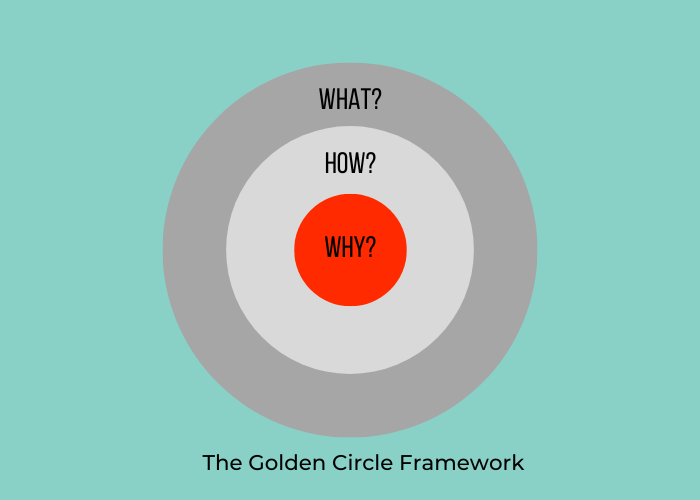
Answering these 3 essential questions can give you a fundamental storyline to begin crafting a powerful brand story.
Other Notable Mentions:
A few other frameworks such as AIDA (Attention, Interest, Desire, Action) or PAS (Problem, Agitate, Solution) are usually seen as copywriting formulas, they could be used as storytelling frameworks given the right context.
Some Inspiration: Examples of great brand storytelling
Honda
Honda has created stellar pieces of brand storytelling through the years. Last year’s edition perfectly showcases the ‘why’ of the brand and how it hinges on the power of ideas.https://www.youtube.com/watch?v=q_ZpE15892U&ab_channel=Honda
Apple
With every new launch, Apple releases a well-crafted ad that takes you through the innovation of the product and how it relates to their phone. Check out their latest Apple Watch Ultra film here.https://www.youtube.com/watch?v=Cy1adxM-CjM&t=1s&ab_channel=Apple
Johnny Walker
A story well-told. Johnny Walker’s origin is told with wit and charm through a stroll about how it became the world famous whiskey it is today. https://www.youtube.com/watch?v=fZ6aiVg2qVk&ab_channel=BestCommercials
Conclusion
Brand stories can add a depth to your brand identity, giving consumers a quick handle by which to relate and connect with. As the first step to developing your brand story, it’s important to create one that elegantly captures the spirit and purpose of your business while speaking to the needs and sentiments of your target audience.If you’re looking to begin creating one for your business, you could get off to a great start by downloading our Brand Story Workbook here. Fill in the spaces of any of the frameworks, and your storytelling can take off from there! Need a hand? At Everyone Creative, we’ve created brand stories for tech, finance, fashion and more. We’d be glad to talk to you about bringing your powerful brand story to life. Give us a ping on wayne@everyonecreative.co and we’d be ready to have a chat over a coffee or a call.https://www.youtube.com/watch?v=fZ6aiVg2qVk&ab_channel=BestCommercials
